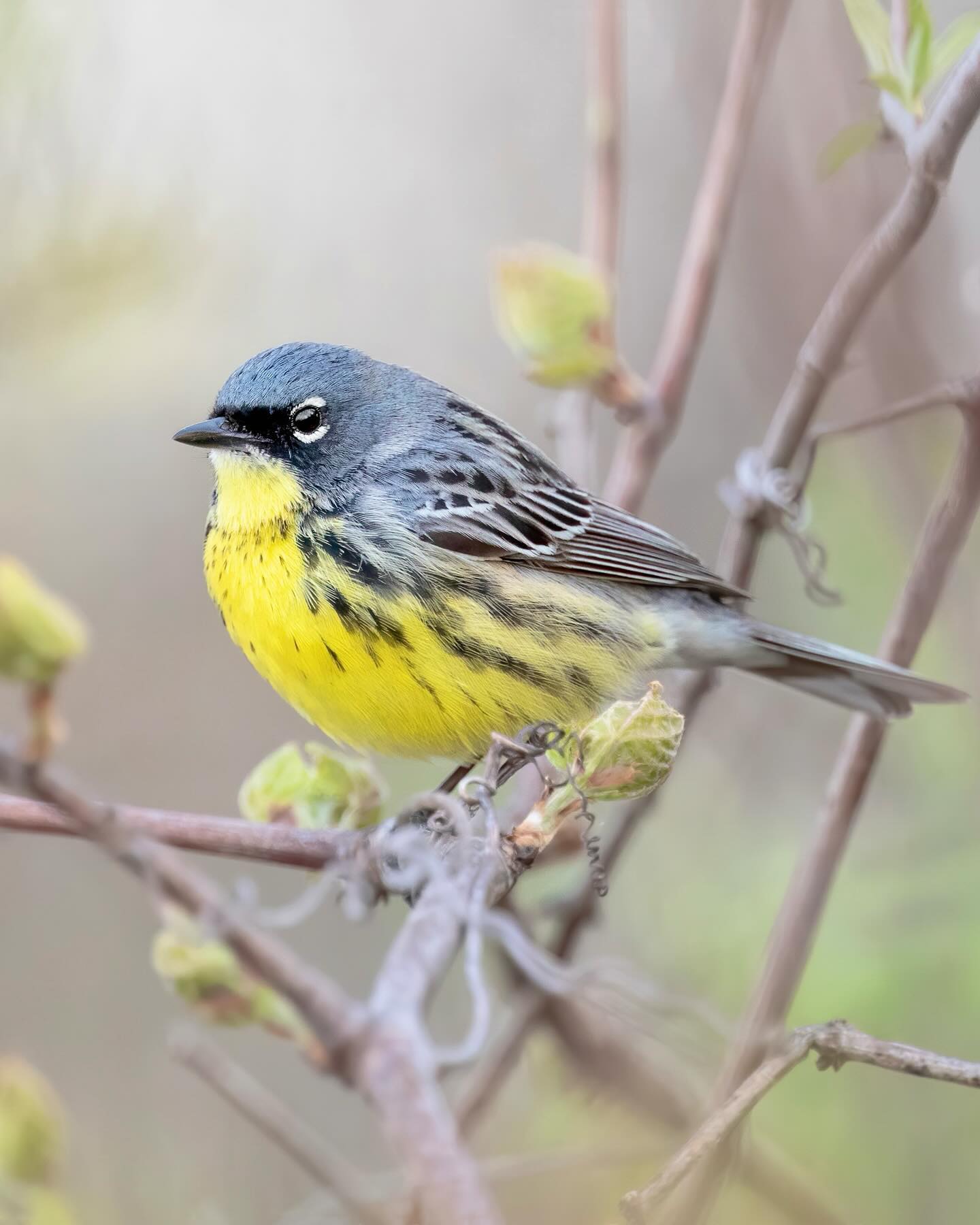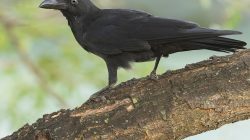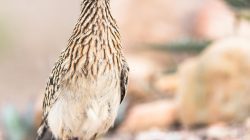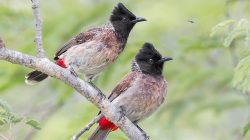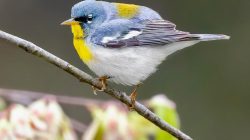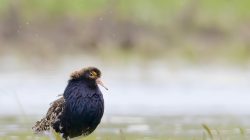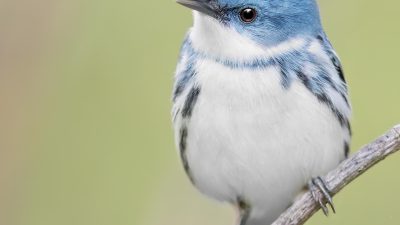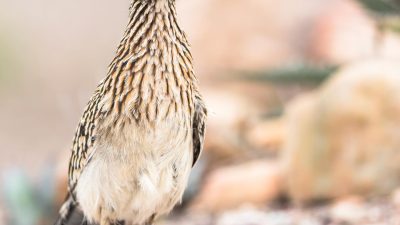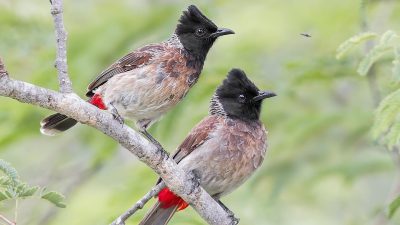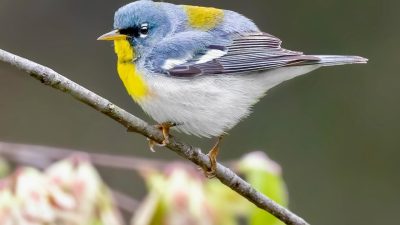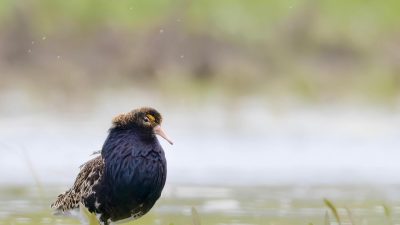Seeing this Stunner of an Endangered Kirtland’s Warbler (Setophaga kirtlandii)
Diajar.net – The Kirtland’s Warbler (Setophaga kirtlandii) is a small songbird that commands the attention of ornithologists and bird enthusiasts alike. Known for its vibrant plumage and melodious songs, this endangered bird species is an icon of conservation success and a symbol of the fragility of nature. In this article, we will delve deep into the Kirtland’s Warbler, exploring its origin, physical characteristics, distribution, habits, diet, and conservation status. Through this exploration, we gain not only a greater understanding of the bird itself but also of the broader efforts necessary to protect endangered species around the globe.
Origin of Animal Name
The name Setophaga kirtlandii is attributed to the American naturalist and ornithologist, Jared P. Kirtland, who made significant contributions to the study of the bird species in the mid-19th century. Kirtland’s Warbler was first described in 1851 by the famous naturalist, who was based in Ohio and is best known for his work in cataloging the flora and fauna of the United States. His discovery of the bird, endemic to a very specific region, made a significant impact in the field of ornithology.
The genus name Setophaga is derived from Greek, where “setos” means “bristle” and “phagos” means “eater,” a reference to the bird’s feeding habits. The species name kirtlandii was given in honor of Jared Kirtland, acknowledging his contributions to the study of American wildlife. As with many species names in scientific classification, the use of a person’s name is a tribute to their pioneering work in the field of natural sciences.
Appearance
The Kirtland’s Warbler is a strikingly beautiful bird with distinctive coloration and features that make it easy to identify. Adult males typically exhibit a vibrant blue-gray head with a light yellow belly and underparts. They have dark streaks on their backs, particularly along the wings and tail feathers, which contrast sharply against their yellowish belly. Their distinctive markings include a white ring around their eyes, giving them an alert, curious expression.
Females, on the other hand, are generally less colorful, with more subdued grayish-brown and yellow tones. Their appearance is more cryptic, aiding their camouflage as they nest in the dense vegetation of their preferred habitats. Juvenile Kirtland’s Warblers are also more subdued in color, with brownish tones and streaks on their backs, which gradually develop into the vibrant adult plumage as they mature.
The Kirtland’s Warbler is a small bird, typically measuring 5 to 6 inches in length, with a wingspan of about 9 to 10 inches. Its bill is slender and pointed, ideal for catching insects, which are a primary food source for the warbler. This small size and subtle coloration are adaptations that help the bird thrive in its unique habitat.
Distribution
The Kirtland’s Warbler is an extremely specialized species when it comes to its distribution. It is primarily found in the jack pine forests of Michigan, particularly in the northern Lower Peninsula. This region has been the focal point of conservation efforts due to the bird’s highly restricted range. While historically, the Kirtland’s Warbler was found in various parts of the northeastern United States, its distribution is now concentrated in this one area, making it incredibly vulnerable to habitat loss.
The bird is migratory, spending its winters in the Bahamas, particularly on the islands of Andros and New Providence. During the breeding season, however, it returns to Michigan’s jack pine forests, which are essential for its nesting. The bird is highly dependent on the specific characteristics of these forests, particularly the presence of young, dense jack pine trees, which provide the necessary cover for both nesting and foraging.
While Michigan remains the primary breeding ground for the Kirtland’s Warbler, its migratory route to the Bahamas highlights its unique geographical connection between North America and the Caribbean. This cross-border habitat usage presents both opportunities and challenges for conservation efforts, as it requires cooperation between multiple countries to ensure the bird’s survival.
Geography
The Kirtland’s Warbler’s geographical range is tightly linked to the ecosystems of northern Michigan. The bird thrives in young jack pine forests, a type of habitat that was historically abundant in the region but has since become rarer due to logging practices and land development. These forests provide the ideal environment for the bird, offering the dense, low shrubs that make up the ground cover, as well as the tall, sparse tree canopy that provides both shelter and foraging opportunities.
Geographically, the region around Michigan’s Lower Peninsula is characterized by sandy soils, which are crucial for the growth of jack pine trees. The unique soil composition in this area, combined with a fire-dependent ecosystem, has historically shaped the structure of the forests that the Kirtland’s Warbler depends on. In fact, the warbler’s nesting success is closely tied to periodic wildfires, which promote the growth of new jack pines that the birds use for nesting.
The warbler’s migratory route takes it to the tropical islands of the Bahamas, where the geography of these islands provides a contrasting environment to the cool, temperate forests of Michigan. In the Bahamas, the bird prefers habitats with dense shrubs and palm trees, and the subtropical climate provides a warm winter refuge before returning to Michigan in the spring.
Habits and Lifestyle
Kirtland’s Warblers are primarily insectivorous, feeding on a variety of insects, including moths, beetles, and caterpillars. They forage by flitting through the low shrubs and trees of their habitat, using their pointed bills to capture prey. Their feeding habits are essential for maintaining the health of their ecosystems, as they help control insect populations and contribute to the biodiversity of the areas where they live.
Socially, Kirtland’s Warblers are generally solitary or found in small groups, particularly during the breeding season. Males sing to defend their territories and attract mates, with their song being a series of high-pitched, musical notes. The songs are not only a method of communication but also serve to establish and maintain social hierarchies within the bird’s population. These songs are often heard during the early morning hours, adding to the symphony of sounds in the early summer months in Michigan’s forests.
During the breeding season, the warblers are highly territorial, and males can be quite aggressive when defending their nesting sites. Females, in contrast, focus on nest building and raising their young. They typically construct their nests on the ground or at the base of low shrubs, where they lay 4 to 5 eggs. Both parents take turns incubating the eggs and feeding the chicks after they hatch.
In winter, the Kirtland’s Warbler migrates to the Bahamas, where it becomes a more social species, often foraging in small flocks. The warmer climate allows the birds to continue foraging and resting, preparing for their return to Michigan the following spring. The migration of the Kirtland’s Warbler is a remarkable journey, as it covers thousands of miles and requires the birds to navigate across varied landscapes.
Diet and Nutrition
The diet of the Kirtland’s Warbler is composed primarily of insects, which are abundant in the young jack pine forests where the birds breed. During the warmer months, the warblers feed on caterpillars, beetles, moths, and other small invertebrates. These insects provide the necessary nutrients for the birds, especially during the critical breeding season when they need extra energy to raise their young.
The abundance of insects in the warbler’s habitat is directly linked to the health of the ecosystem. When the forests are disturbed, such as through logging or fire suppression, the availability of insects may decrease, making it more difficult for the warblers to find enough food. This, in turn, can affect the warbler’s reproductive success and population size.
During the winter months, the Kirtland’s Warbler migrates to the Bahamas, where its diet shifts slightly to include other small invertebrates found in the tropical environment. However, the majority of the bird’s diet remains insect-based, with the abundance of insects in the subtropical climate supporting the bird’s needs during its time away from Michigan.
Population
The Kirtland’s Warbler has long been considered an endangered species due to its highly restricted range and the ongoing threats to its habitat. At one point, the population of Kirtland’s Warblers had dipped to dangerously low levels, with only around 200 individuals remaining in the wild in the 1970s. This alarming decline was primarily driven by habitat loss, including the destruction of the young jack pine forests, as well as nest predation and parasitism by cowbirds.
Thanks to concerted conservation efforts, the population of the Kirtland’s Warbler has shown signs of recovery. However, the bird remains classified as endangered, and its population numbers are still closely monitored by conservationists and ornithologists. As of the most recent estimates, the population has increased to around 2,000 breeding pairs, though this number is still far below what is necessary for long-term population stability.
Conservation programs, including the management of jack pine forests through controlled burns and reforestation, have played a crucial role in increasing the availability of suitable nesting habitats for the Kirtland’s Warbler. These efforts have contributed to the bird’s recovery, but continued management and protection are essential to ensure that the population remains stable.
Number of Populations
The number of populations of Kirtland’s Warblers is limited to a small area in Michigan, with the majority of the bird’s breeding population concentrated in the Lower Peninsula. While the bird has been recorded in a few other locations, such as Wisconsin and parts of Canada, the vast majority of Kirtland’s Warblers breed exclusively in Michigan.
The concentration of the species in one small area presents significant challenges for conservation. If a disease, environmental disaster, or significant habitat disturbance were to affect the region, the entire population of Kirtland’s Warblers could be threatened. This underscores the importance of habitat protection and the need for a broad conservation strategy that considers both the current range of the species and potential future risks.
Efforts to expand the bird’s range and establish new populations through habitat restoration and translocation have been explored, but these initiatives remain in early stages. As such, the bird’s population remains vulnerable, and the preservation of its current habitat is critical to its survival.
Conservation
The Kirtland’s Warbler has become a poster child for conservation efforts, particularly in the United States. The bird’s endangered status has spurred extensive research and active management of its habitat, particularly in Michigan. The warbler’s recovery has been a success story for conservationists, but the species still faces significant threats.
One of the primary conservation strategies has been the active management of the jack pine forests that the Kirtland’s Warbler depends on for breeding. Controlled burns have been used to mimic the natural fire cycles that once kept these forests healthy, creating the young, dense jack pine stands that the warblers require for nesting. Additionally, efforts to prevent logging and land development in key habitats have been crucial in preserving the bird’s habitat.
Another important aspect of conservation has been the management of the cowbird population, which is known to parasitize Kirtland’s Warbler nests by laying its eggs in the warbler’s nest. Cowbirds can outcompete the warbler’s eggs, leading to a decrease in the warbler’s reproductive success. Efforts to control cowbird populations in Michigan have helped reduce the pressure on Kirtland’s Warblers during the breeding season.
Despite these successes, the Kirtland’s Warbler remains endangered, and ongoing conservation efforts are essential to maintain its population and ensure its long-term survival. The bird’s reliance on a very specific habitat makes it particularly vulnerable to climate change and other environmental threats, so the need for continued vigilance and management cannot be overstated.
Conclusion
The Kirtland’s Warbler is a stunning example of nature’s beauty and fragility. Its vibrant plumage and melodious song are a testament to the power of conservation, but its endangered status serves as a reminder of the delicate balance required to protect such species. From its origin name to its specific habitat preferences, every aspect of the Kirtland’s Warbler’s existence highlights the importance of preserving natural ecosystems and the species that depend on them.
As we continue to protect the habitats of this extraordinary bird, we not only safeguard the future of the Kirtland’s Warbler but also contribute to the broader efforts to protect biodiversity across the planet. Through concerted action and careful management, we can ensure that this stunner of an endangered species continues to thrive for generations to come.
